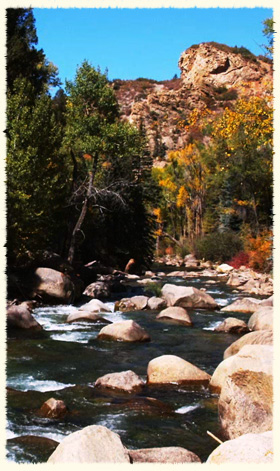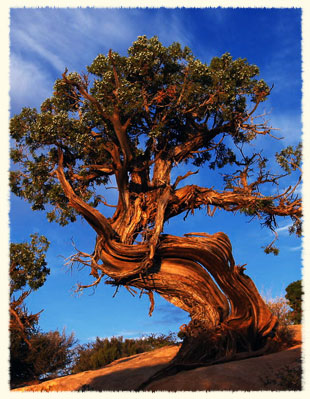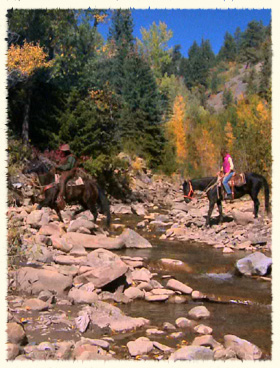
"Our ideals, laws and customs should be based on the proposition that each generation, in turn, becomes the custodian rather than the absolute owner of our resources and each generation has the obligation to pass this inheritance on to the future. "




- On September 3, 1964, President Lyndon Johnson signed the Wilderness Act, and for the first time in human history a society created a law to keep the wildest public lands wild, forever.
- Wilderness is public land, owned by all Americans.
- Four Federal agencies manage public land, the U. S. Forest Service, the National Park Service, the Bureau of Land Management, and the Fish and Wildlife Service.
- The Wilderness Act provides that public lands protected as wilderness shall be protected in their natural condition; that they retain their primeval character and influence, without permanent improvement or human habitation; that the area has outstanding opportunities for solitude or a primitive and unconfined type of recreation; that the land is devoted to the public purposes of recreation, scenic, scientific, educational, conservation and historic use.
- Wilderness designation allows a variety of uses including hiking, camping, horseback riding, fishing, hunting, rafting, cattle grazing, and quiet recreation. Wilderness harbors immensely important wildlife habitat, fresh water and clean air.
- The 1964 Wilderness Act designated 54 areas in 13 states (9.1 million acres) as wilderness under the National Wilderness Preservation System.
- In the 45 years since the passage of the Wilderness Act, the National Wilderness Preservation System has grown to include 756 areas in 44 states and Puerto Rico (nearly 110 million acres).
- 1984 (25 years ago) marks the year when the most new wilderness areas were added to the National Wilderness Preservation System.
- Designated wilderness comprises 13.3% of the public lands outside of Alaska; including Alaska, wilderness comprises 17.% of the public lands of the United States.
- Designated wilderness accounts for 2.68% of the total land and inland water area of the 49 United States, excluding Alaska. With Alaska, wilderness accounts for 4.73% of the total land and inland water area in America.
- The smallest wilderness area is the Rock and Islands Wilderness in northern California (5 acres).
- The largest wilderness area is the Wrangell-Saint Elias Wilderness in Alaska (9,078,675 acres).
- The states with the most wilderness areas are Alaska, California, Colorado, Nevada and Arizona.
- The states with no wilderness areas are Connecticut, Delaware, Iowa, Kansas, Maryland, Rhode Island.
- The newest wilderness areas were designated by President Obama on 3/30/09 as part of the Omnibus Public Land Management Act of 2009 which protects 52 new areas and adds acreage to 26 existing areas, for a total addition to the National Wilderness Preservation System of over 2 million acres.
- More than 12 million people visit wilderness areas each year, and half of all wilderness areas are within a day’s drive of America’s 30 largest cities.
- Nine out of ten people in America believe that protecting public land as part of the National Wilderness Preservation System is important.
- As much as 300 million acres, or more, of our federal lands remain roadless and subject to further consideration by Congress, managing agencies, and citizen organizations -- and many of these places may well be protected as Congress considers additional wilderness protection.
- Public lands that are not pristine, but historically were logged or otherwise impacted by human activity (like most forested lands in the East) are eligible for wilderness designation when the area has been sufficiently restored by nature and the human impacts are substantially unnoticeable.
- Unprotected wilderness quality lands are threatened by energy development, rural sprawl, hard rock mining, road building, and motorized recreation. Once developed, these lands do not qualify for wilderness designation.
- Wilderness is preserved by people. The Wilderness Act does not protect public lands until local people and/or agency staff who know the land well identify an area to be protected, and persuade an elected member of Congression to carry a bill and help pass a new law to protect the area permanently under the Wilderness Act.
- Wilderness and other protected areas (e.g. National Parks, wildlife refuges, state parks, local land trust holdings) are the cornerstones for landscape level conservation efforts aimed at reconnecting fully functioning ecosystems along key corridors in the United States. (see The Wildlands Project and Yellowstone to Yukon)
- Large intact ecosystems protected as wilderness store vast amounts of carbon. At least 25% of all emissions since the industrial revolution have come from destroying wild nature.
